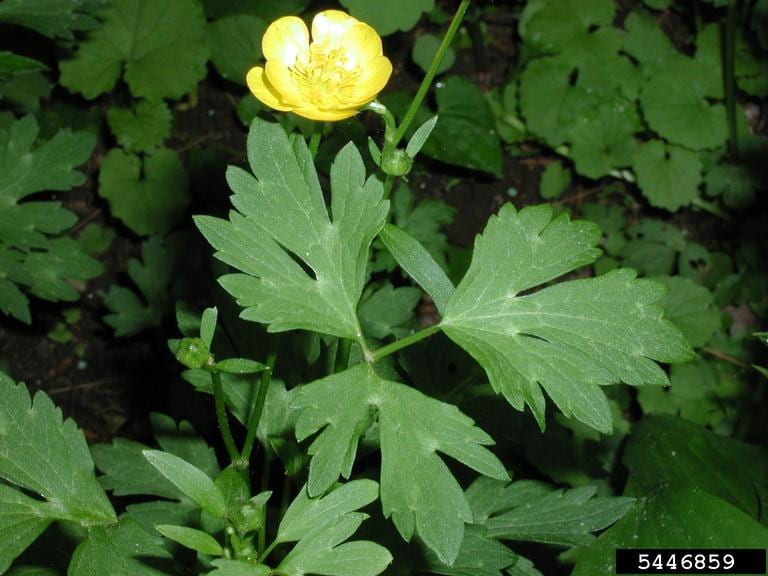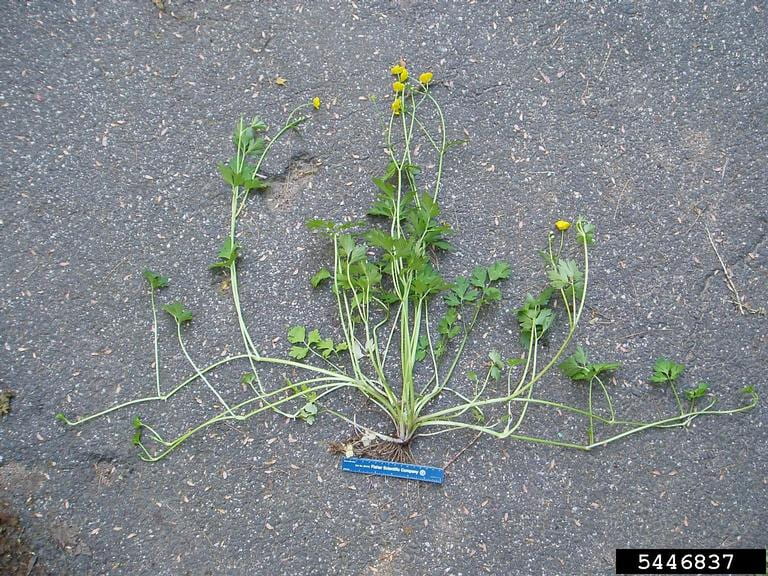The mystery weed
This weed was found in late May in a wetter portion of a corn field. The grower has had it in the field for several years, and while it is not yield limiting, control with his normal weed management plan has not been effective.
Identification
This is creeping buttercup (Ranunculus repens). There are several weedy buttercups, but this one has three lobes on it leaves and aboveground stolons – aboveground runners – that it uses to spread. It’s a perennial that’s often found in wet areas of pasture, farmland, or roadsides. It is toxic to livestock when fresh. While it is not very palatable, it’s reported that occasionally livestock develop a taste for it and injest fatal doses. It is not toxic in hay; I did not see data on its toxicity in wet feeds such as sileage. Most of the information available is from the Pacific Northwest, such as this article from the state of Washington.
Management
Control of creeping buttercup can be obtained through regular cultivation in drier conditions, repair of the drainage in the infested field, spot pulling or spraying, and herbicides. Purdue University produced a good summary of agricultural control of buttercup through herbicides. Mike Hunter of CCE’s field crops team did a quick check of corn herbicides with this weed listed on the label, and found Banvel (and many other generic dicambas), Diflexx Duo, Distinct, Fexapan, Roundup Xtend, and Xtendimax.



